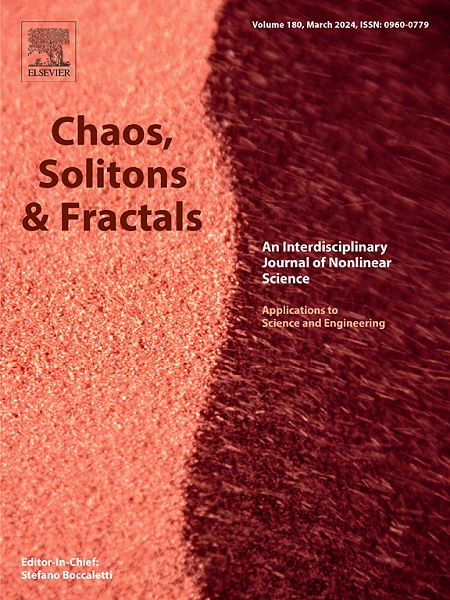具有高阶相互作用和增益/损失原子的二维玻色-爱因斯坦凝聚体中控制二阶异常物质波和线亮孤子动力学
IF 5.3
1区 数学
Q1 MATHEMATICS, INTERDISCIPLINARY APPLICATIONS
引用次数: 0
摘要
我们利用Hirota的双线性方法研究了考虑原子增益/损失和时间无关的各向同性限制势影响的二维修正Gross-Pitaevskii方程。通过适当的双线性形式,我们得到了精确的单孤子解和多孤子解。这些解显示了两个突出的现象:具有时空局域性的二阶流氓物质波和具有双空间局域性的线孤子。我们证明了通过适当调整玻色-爱因斯坦凝聚体中的高阶相互作用系数来控制孤子振幅和增益/损失导致坍缩区域的影响的可行性。此外,通过探索多孤子解的相互作用动力学,我们确定了弹性型相互作用,并证明了孤子的固有性质。本文还深入分析了高阶相互作用和增益/损失项对相互作用动力学的影响。这些分析表明,在二维修正的Gross-Pitaevskii方程所描述的玻色-爱因斯坦凝聚的框架内,高阶相互作用提供了一种控制产生的异常物质波性质的方法。进行了密集的数值模拟,其与理论预测结果的收敛性揭示了所选解的紧急特征。本文导出的精确解析解严格满足原方程,保证了与数值结果的一致性,证实了解析解的准确性。因此,我们的发现对潜在的未来应用具有希望。本文章由计算机程序翻译,如有差异,请以英文原文为准。
Controlling second-order rogue matter wave and line bright soliton dynamics in 2D Bose–Einstein Condensate with higher-order interactions and gain/loss atoms
We investigate the two-dimensional modified Gross–Pitaevskii equation, accounting for the effects of atom gain/loss and a time-independent isotropic confining potential, utilizing the Hirota’s bilinear method. Through an appropriate bilinear form, we derive exact one-soliton and multi-soliton solutions. These solutions showcase two prominent phenomena: the second-order rogue matter wave with spatio-temporal localization, and the line soliton with double spatial localization. We demonstrate the feasibility of controlling the soliton amplitude and the effects of gain/loss resulting in areas of collapse by suitably tuning the coefficient of higher-order interactions in the Bose–Einstein condensate. Additionally, by exploring the interaction dynamics of the multi-soliton solutions, we identify elastic-type interactions, claiming the intrinsic properties of solitons. The influence of higher-order interactions and gain/loss terms on the interaction dynamics is also thoroughly analyzed. These analyses demonstrate that, within the framework of Bose–Einstein condensates described by the two-dimensional modified Gross–Pitaevskii equation, higher-order interactions provide a means to control the properties of the generated rogue matter waves. Intensive numerical simulations are performed and their convergence with theoretical predicted results then throw light about the emergent features of the chosen solutions. The exact analytical solutions derived in this study rigorously satisfy the original equation, which ensures their consistency with the numerical results and confirms their accuracy. Thus, our findings hold promise for potential future applications.
求助全文
通过发布文献求助,成功后即可免费获取论文全文。
去求助
来源期刊

Chaos Solitons & Fractals
物理-数学跨学科应用
CiteScore
13.20
自引率
10.30%
发文量
1087
审稿时长
9 months
期刊介绍:
Chaos, Solitons & Fractals strives to establish itself as a premier journal in the interdisciplinary realm of Nonlinear Science, Non-equilibrium, and Complex Phenomena. It welcomes submissions covering a broad spectrum of topics within this field, including dynamics, non-equilibrium processes in physics, chemistry, and geophysics, complex matter and networks, mathematical models, computational biology, applications to quantum and mesoscopic phenomena, fluctuations and random processes, self-organization, and social phenomena.
 求助内容:
求助内容: 应助结果提醒方式:
应助结果提醒方式:


